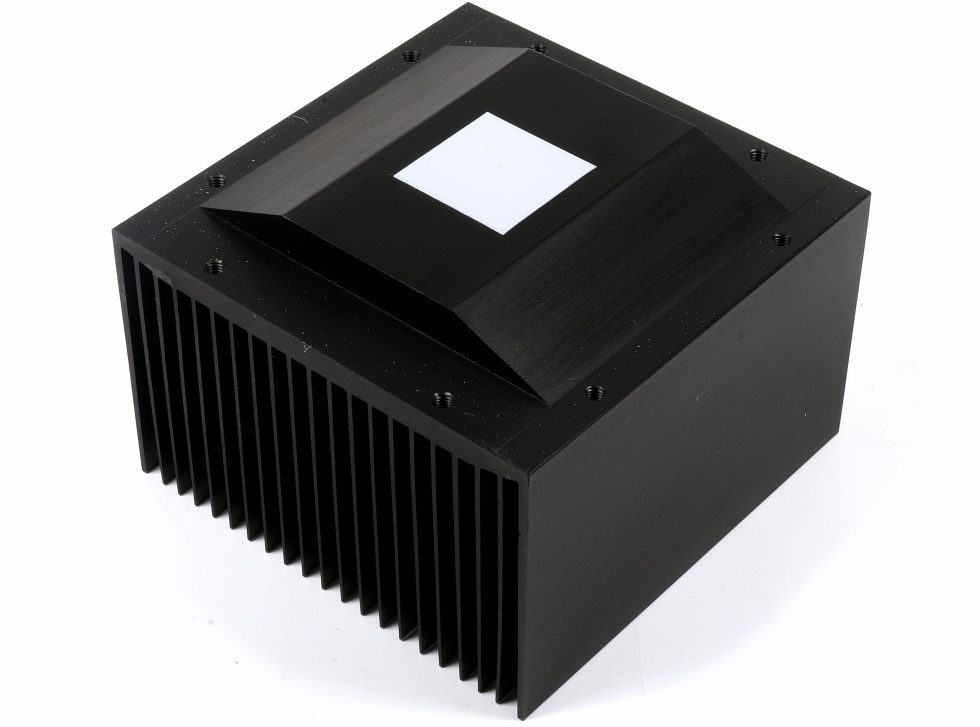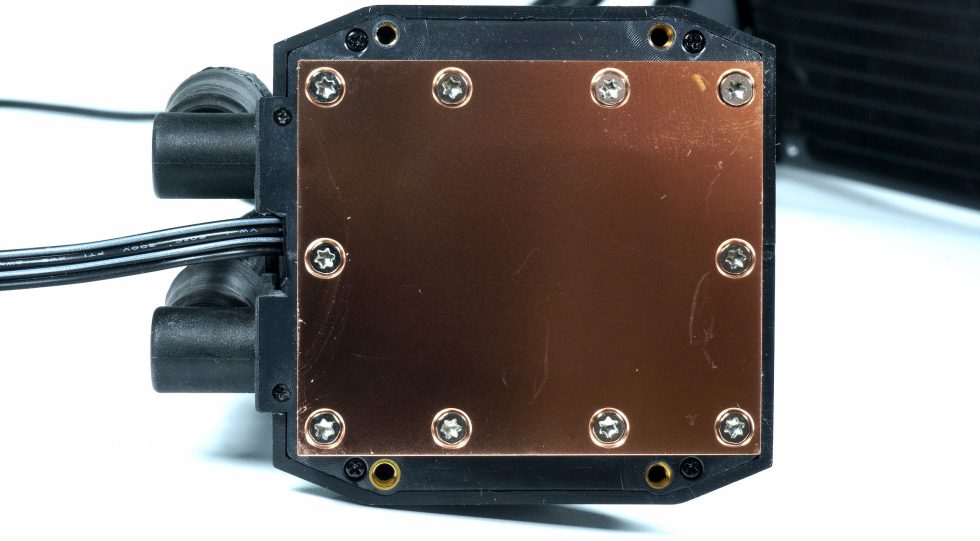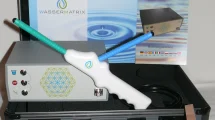The optimum temperature window is extremely important!
The efficiency of thermal pastes depends significantly on their behavior within certain temperature ranges. An optimum temperature window is crucial for maintaining efficient heat transfer, while hardening of the paste can reduce its effectiveness. I have already mentioned this with the so-called LN2 pastes and explained the pointlessness of such expensive special pastes in everyday use. The optimum temperature window for thermal pastes refers to the range in which the paste retains its best thermal transfer properties without degrading its physical properties.
Within this window, the paste maintains a suitable viscosity that ensures a minimum thermal resistance layer between the contact surfaces. Too low temperatures can harden the paste and reduce its fluidity, while too high temperatures can lead to separation of the components or liquefaction, which reduces the effectiveness of the thermal interface. Various factors influence the temperature window in which a thermal paste functions effectively:
- Chemical composition:
The base polymers, fillers and additives determine the thermal stability and viscosity of the paste. - Filler material and concentration:
Fillers such as aluminum oxide, boron nitride, copper or silver improve the thermal conductivity, but also influence the behavior of the paste at different temperatures. - Curing mechanism:
Some thermal conductive pastes cure to form a permanent bond, which can affect their temperature behavior.
Curing refers to the process by which a thermal compound transitions from an initially pasty state to a more solid, often less elastic state. This can be caused by chemical reactions, evaporation of solvents or physical changes such as the absorption of moisture from the environment. Although curing may be desirable in some applications to ensure long-term stability of heat transfer, it can also lead to problems.
A cured material may crack or peel away from surfaces, resulting in increased thermal resistance. The ability of the paste to compensate for small irregularities in the contact surfaces may be reduced (reduced conformability) and it can lead to difficulties in maintenance, as once cured pastes are more difficult to remove or replace, making maintenance more difficult.
To minimize the negative effects of curing and extend the optimum temperature window, various strategies can be used. On the one hand, there is the selection of pastes with high thermal stability, as the risk of degradation can be reduced by selecting materials specifically designed for high temperatures. A regular check of the thermal paste for signs of hardening or degradation can also remind and facilitate timely maintenance. On the other hand, the use of pastes with a low risk of curing is recommended from the outset, as only pastes known to have a lower risk of curing should be chosen for applications where flexibility is required over a long period of time.
Understanding the optimum temperature window of thermal pastes and the effects of curing is critical to the selection and use of these materials in thermal management applications. By carefully selecting the paste that matches the specific requirements of the application and the expected temperature range, engineers can maximize the performance of electronic systems while ensuring longevity and reliability. They just have to want to, and the controller doesn’t have to call for excessive economy.
Different expansion behavior of aluminum and copper on a heatsink and optimization possibilities
Aluminum and copper are two of the most commonly used materials for heatsinks in the PC sector, with each material having unique properties and thermal expansion behavior. These differences affect not only the direct heat dissipation performance, but also the choice of the optimal thermal compound to ensure an efficient thermal interface between the heatsink and the heat source. You should also take a look at the thermal expansion coefficients!
Aluminum:
Aluminum has a coefficient of thermal expansion of around 23 x 10^-6 /°C. This means that it expands relatively strongly when heated and contracts accordingly when cooled. Aluminum is lightweight, inexpensive and has good thermal conductivity, making it a popular choice for many PC cooling applications.
Copper:
Copper has a slightly lower coefficient of thermal expansion of about 17 x 10^-6 /°C. Copper offers excellent thermal conductivity, better than aluminum, but is heavier and more expensive. Due to its lower coefficient of expansion compared to aluminum and its higher thermal conductivity, copper is often used in high-end or specialized cooling applications where maximum heat dissipation is required.
The different expansion characteristics of aluminium and copper have a direct impact on the selection and optimization of thermal paste. An ideal thermal paste must be able to effectively bridge the thermal gap between the CPU/GPU and the heat sink, but also take into account the different expansion properties of the materials in order to minimize mechanical stresses. For aluminum heat sinks: Due to the higher thermal expansion of aluminum, it is important to choose a thermal paste that has good flexibility and elasticity to compensate for the expansion and contraction of the material without cracking or peeling of the paste. Pastes with a certain damping property can help to absorb the mechanical stresses caused by expansion.
For copper heat sinks, which have lower thermal expansion, selecting a thermal paste with excellent thermal conductivity is a priority to maximize efficient heat transfer from the chip to the heat sink. Mechanical stress due to thermal expansion is less critical than with aluminum, which means that the paste can be more focused on optimal thermal conductivity.
To optimize the fit between heat sink material and thermal paste, certain considerations should be taken into account. Matching the thermal dynamics is fundamental, as the thermal paste should not only be selected for the static properties of the heat sink material, but also for the thermal dynamics of the application. This includes considerations such as the operating temperature and the thermal load. The paste should also have a high long-term stability and not dry out, harden or degrade at the operating temperatures that are influenced by the specific materials of the heat sink.
Compatibility with surface treatments should also be considered, as some heat sinks may have surface treatments or coatings that affect the adhesion and thermal conductivity of the thermal paste. The paste should be compatible with these treatments to ensure an effective thermal interface. Almost all end users forget this. In the end, selecting the optimal thermal paste for aluminum or copper heat sinks really requires careful consideration of material properties, operating conditions and specific requirements, except that such data is almost never known and almost all tests of thermal pastes completely skip such fundamental information.
The correct application of thermal compound
The correct application of thermal paste is crucial for efficient heat transfer between a CPU or GPU and its heatsink. The method of application can vary depending on the processor type, heatsink shape and material to ensure optimal thermal performance. There are of course tried and tested methods for applying thermal compound for home users, but there are at least as many tutorials and “religions”. Myths anyway.
In general, however, before applying new thermal paste, the surfaces of the CPU/GPU and heat sink should be thoroughly cleaned with isopropyl alcohol (>70%) and a lint-free cloth to remove old paste and impurities. Too much thermal paste can lead to inefficient heat transfer, while too little paste does not cover the entire surface. As a rule, a pea to rice grain-sized amount is sufficient. On the PC it can look like this (non-judgmental):
- Pea method:
Apply a small drop (about the size of a pea) to the center of the CPU heatspreader (the top metal plate of the CPU) and press the heat sink onto it. The pressure distributes the paste evenly. - Cross method:
Especially for larger CPUs, a thin cross can be applied to ensure better coverage. - Manual distribution:
Using a spatula or plastic card, the paste can also be spread manually in a thin, even layer. However, this method requires caution to avoid air bubbles.
GPU application methods vary slightly depending on the shape. Size and curvature of the GPU
- Direct drop method:
Since the GPU die (the silicon chip itself) is often larger than the CPU die and may be directly exposed (without a heatspreader), a direct, centered pea-sized amount followed by pressing on the heatsink is usually sufficient. - Direct line method:
Similar to the blob, a thin sausage is applied centrally to the two longest sides. The rest is applied as described above. - Full-surface coverage:
For some high-end GPUs or when using water cooling blocks, it may be necessary to apply the paste so that the entire die surface is covered to ensure optimal cooling.
You also need to consider the differences in heatsink shapes and materials, which many unfortunately forget:
- Flat heatsinks:
For heatsinks with a flat surface, the pea method or manual distribution is usually effective. - Copper vs. aluminum:
Copper heatsinks conduct heat better than aluminum, but both materials benefit from an even, thin layer of paste. Copper heat sinks may require a slightly thinner layer as they have better thermal conductivity. - Coolers with ground heat pipes (Direct Heat Touch DHT):
For heat sinks with heat pipes, care should be taken to ensure that the thermal paste is applied particularly to the areas where the heat pipes touch the CPU/GPU to ensure optimum heat transfer and care must be taken to ensure that any gaps are also filled.
The optimal method of applying thermal paste depends on several factors, including the type of processor, the size and shape of the heatsink and the material. Correct application ensures maximum heat transfer efficiency and can improve the performance and lifespan of the components. It is important to apply the paste in the correct amount and with a method that ensures complete, even coverage without air bubbles.
- 1 - The three big P's - introduction to pastes, pads and putty
- 2 - The purpose of thermal pastes
- 3 - The big debate between cheap and expensive
- 4 - The matrix as the basis for all pastes and pads
- 5 - Silicone-based pastes: optimization, durability, decomposition
- 6 - Thermally conductive fillers are important
- 7 - How the degree of grinding influences performance
- 8 - Silicone modification for low temperatures and LN2 overclocking
- 9 - The paste production process and possible hurdles
- 10 - Special case liquid metal (LM)
- 11 - Special case of graphite pads and phase changers
- 12 - Temperature window, expansion behavior, application
- 13 - Ageing and decomposition of pastes and pads
- 14 - Manufacturer vs. bottler, misleading marketing and conclusion



































216 Antworten
Kommentar
Lade neue Kommentare
Veteran
1
Veteran
Urgestein
Mitglied
Urgestein
1
Urgestein
Urgestein
Mitglied
Urgestein
1
Mitglied
Urgestein
1
Urgestein
1
Veteran
Alle Kommentare lesen unter igor´sLAB Community →